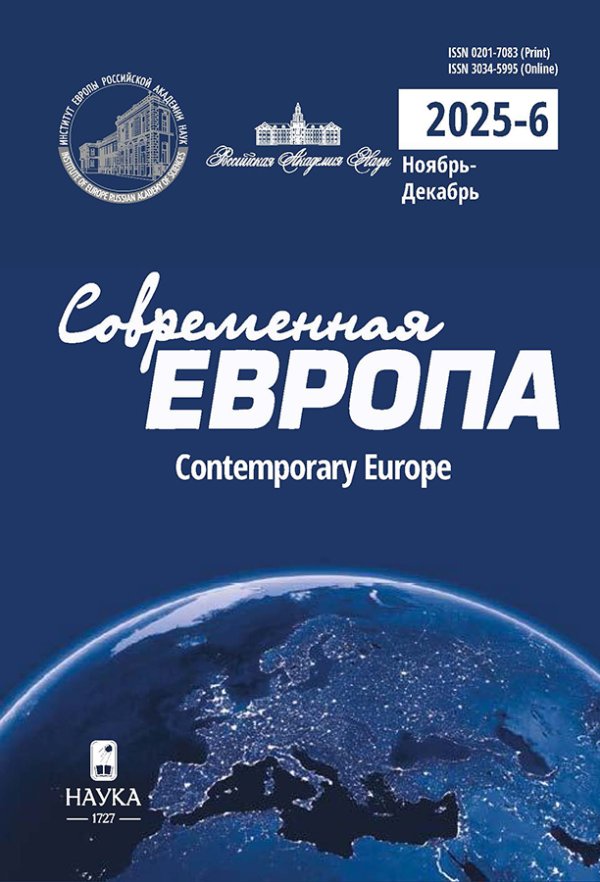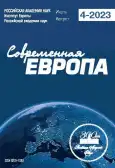No 4 (118) (2023)
Articles
The EU approach towards China in the context of countering hybrid threats
Abstract
 48-61
48-61


Evolution of the “digital sovereignty” concept in the EU: constants and dichotomies
Abstract
 62-76
62-76


Migration policy in Albania: institutional aspects
Abstract
 77-88
77-88


French-speaking jewish community in contemporary Israel: sociological and political profile
Abstract
 89-103
89-103


The french nuclear challenge to the eu green energy governance
Abstract
This paper explores the role of nuclear power in substituting fossil fuels and contributing to the net zero. It considers to what extent the French position on nuclear energy is viable within the framework of EU green energy governance. The analysis of EU legal attempts to develop a common strategy for member countries and the case study of France reveal the controversial nature of nuclear energy. The authors argue that the EU could work towards easing off nuclear energy and could successfully overcome the pro-nuclear views of countries which currently depend on it for electricity production. The limited climate benefits of nuclear energy, when the whole life-cycle of nuclear reactors is considered, and the unease of the population with nuclear energy, even in countries that depend on it, chart a probable new course for a renewable energy mix in the EU. This phasing-out of nuclear energy is likely to be progressive so as to avoid lost investments in developing the technology and will hinge on how rapidly renewables reach their technological maturity.
 104-118
104-118


UE - US: new barriers to trade
Abstract
 119-131
119-131


Comparative analysis of the silver economy capacity in Russia and the EU
Abstract
 132-145
132-145


Living standards and quality of life in the EU: challenges of “new” reality
Abstract
 146-156
146-156


Ecumenism in modern Europe: adaptation to secular society
Abstract
 157-169
157-169


Features of hybrid identity of the second/third generation of european muslims
Abstract
 170-182
170-182


A.A. Gromyko and security policy: setting up for Helsinki
Abstract
 183-194
183-194


The first post-war electoral campaign in the modern statehood of Bosnia and Herzegovina
Abstract
 195-206
195-206


Common fisheries policy in the light of Brexit
Abstract
 207-219
207-219












